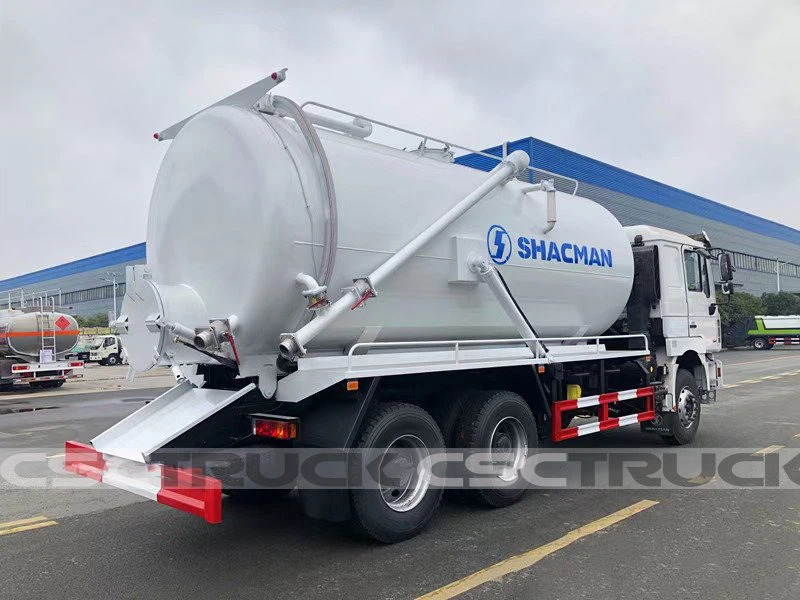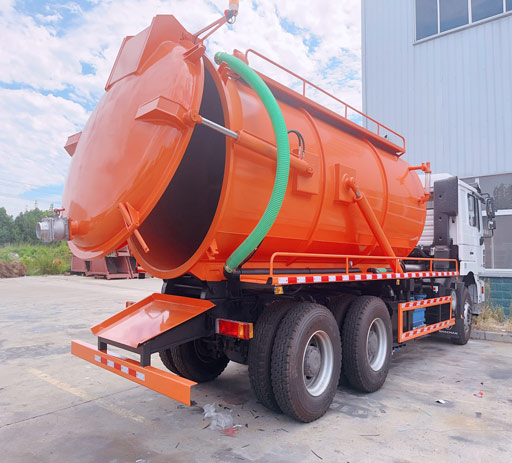Green Garbage Trucks: The Future of Waste Management

Introduction
As urban areas continue to grow, the amount of waste generated increases exponentially. Traditional garbage trucks, while necessary, contribute significantly to air pollution and greenhouse gas emissions. Enter green garbage trucks—vehicles designed not only to transport waste but also to enhance environmental sustainability. This article will explore what green garbage trucks are, their benefits, technological advancements, implementation challenges, and their role in shaping a cleaner and greener future.
What Are Green Garbage Trucks?
Green garbage trucks are innovative waste collection vehicles that utilize environmentally friendly technologies. These trucks often employ alternative fuels, advanced materials, and smart technology to reduce their ecological footprint and improve operational efficiency. The main types of green garbage trucks include:
Electric Garbage Trucks
Electric garbage trucks are powered by electricity rather than traditional diesel fuel. They produce zero tailpipe emissions, significantly reducing air pollution in urban environments. Many municipalities are beginning to adopt electric options to meet sustainability goals.

Compressed Natural Gas (CNG) Trucks
CNG trucks use natural gas instead of diesel. Natural gas produces fewer greenhouse gases during combustion, making CNG trucks a more environmentally friendly alternative.
Hybrid Garbage Trucks
Hybrid garbage trucks combine traditional fuel engines with electric power. This technology optimizes fuel consumption and reduces emissions, providing a flexible solution for waste management.
The Benefits of Green Garbage Trucks
There are numerous advantages to using green garbage trucks. Here are some key benefits:
Environmental Protection
Green garbage trucks contribute significantly to reducing air pollutants and greenhouse gas emissions. By using alternative fuels and better technology, cities can dramatically lower their carbon footprints.
Long-term Cost Savings
Although the initial investment for green garbage trucks can be higher than traditional options, they often lead to significant savings in fuel costs, maintenance, and regulatory compliance over time.
Enhanced Public Health
By lowering emissions, green garbage trucks improve air quality, which directly benefits public health. Cleaner air can reduce rates of respiratory problems, heart diseases, and other health conditions linked to air pollution.
Improved Noise Pollution
Electric and hybrid garbage trucks operate more quietly than their diesel counterparts. This reduced noise pollution leads to a better quality of life for residents in areas where waste collection occurs early in the morning or late at night.
Technological Advancements in Green Garbage Trucks
Innovations in technology are a driving force behind the effectiveness of green garbage trucks. Some key advancements include:
Smart Fleet Management
Modern green garbage trucks are equipped with GPS and telematics systems that provide real-time data on vehicle location, fuel consumption, and maintenance needs. This data helps fleet managers optimize routes, reduce fuel consumption, and enhance overall efficiency.
Regenerative Braking Systems
Many electric and hybrid garbage trucks utilize regenerative braking. This technology captures kinetic energy during braking and converts it back into electrical energy, which can be used to recharge the vehicle’s batteries.
Advanced Battery Technologies
Improvements in battery technology are critical for the efficiency of electric garbage trucks. Newer, longer-lasting batteries allow these trucks to operate for longer periods between charges, increasing their practicality for waste management services.
Challenges in Implementing Green Garbage Trucks
While the benefits of green garbage trucks are clear, there are challenges in their widespread adoption:
High Initial Costs
The upfront costs of purchasing green garbage trucks can be a barrier for municipalities with limited budgets. However, incentives and grants may help offset these costs.
Charging Infrastructure
For electric garbage trucks, a robust charging infrastructure is essential. Municipalities must invest in charging stations to support their fleets, especially if they operate in areas with heavy traffic or long routes.
Technological Complexity

As green garbage trucks incorporate advanced technologies, training employees to operate and maintain these vehicles becomes necessary. This training requires time and resources, which can be a hurdle for some local governments.
Case Studies of Successful Implementation
Several cities are leading the way in adopting green garbage trucks:
Los Angeles, California
Los Angeles has launched an ambitious program to electrify its entire fleet of garbage trucks by 2035. This initiative aims to reduce greenhouse gas emissions and improve air quality throughout the city.
San Francisco, California
San Francisco has introduced a fleet of CNG garbage trucks as part of its zero waste program. These trucks operate more cleanly and efficiently, contributing to the city’s goal of diverting 100% of waste from landfills by 2030.
New York City, New York
NYC has implemented hybrid garbage trucks that offer a substantial decrease in fuel consumption and emissions compared to traditional trucks. These hybrids have been integral to the city’s sustainability efforts.
Practical Tips for Municipalities Considering Green Garbage Trucks
For municipalities contemplating the switch to green garbage trucks, here are some practical tips:
Conduct a Cost-Benefit Analysis
Before investing, perform a thorough analysis comparing the long-term savings of green garbage trucks with their initial costs, considering fuel, maintenance, and health benefits.
Leverage Incentives
Many states and federal programs offer grants and incentives for municipalities adopting green technologies. Research available funding to help offset start-up costs.
Choose the Right Technology
Evaluate the specific waste collection needs of your municipality and choose the technology that best aligns with those needs—be it electric, CNG, or hybrid options.
Engage with the Community
Communicate with the community about the benefits of green garbage trucks. Public support will be critical for successful adoption and can help secure funding or partnerships.
Future Trends in Green Garbage Trucks
As technology continues to advance, the future for green garbage trucks looks promising:
Increased Automation
Automation in waste collection may lead to more efficient routes and less reliance on manual labor. Autonomous garbage trucks are being piloted in some locations.
Integration of Renewable Energy Sources
Solar panels and other renewable energy technologies might be integrated into garbage truck fleets to help power operations and charging stations.
Greater Public Awareness and Demand

As more people become aware of climate change and environmental issues, the demand for greener waste management solutions, including green garbage trucks, is expected to rise significantly.
FAQ
1. Are green garbage trucks more expensive than traditional trucks?
Yes, the upfront cost for green garbage trucks is typically higher, but they can lead to significant long-term savings in fuel and maintenance.
2. How do electric garbage trucks work?
Electric garbage trucks use electricity stored in batteries to power electric motors, producing zero tailpipe emissions.
3. What types of green technology are used in garbage trucks?
Green garbage trucks utilize technologies such as electric motors, compressed natural gas, hybrid systems, and regenerative braking.
4. How can cities support the transition to green garbage trucks?
Cities can support this transition by conducting cost-benefit analyses, leveraging grants and incentives, and engaging the community about the benefits of green options.
5. What are the environmental impacts of using green garbage trucks?
Green garbage trucks significantly reduce air pollutants and greenhouse gas emissions, improving air quality and public health.
6. What is the future of garbage trucks in terms of sustainability?
The future includes increased automation, integration of renewable energy sources, and a growing public demand for sustainable waste management options.
